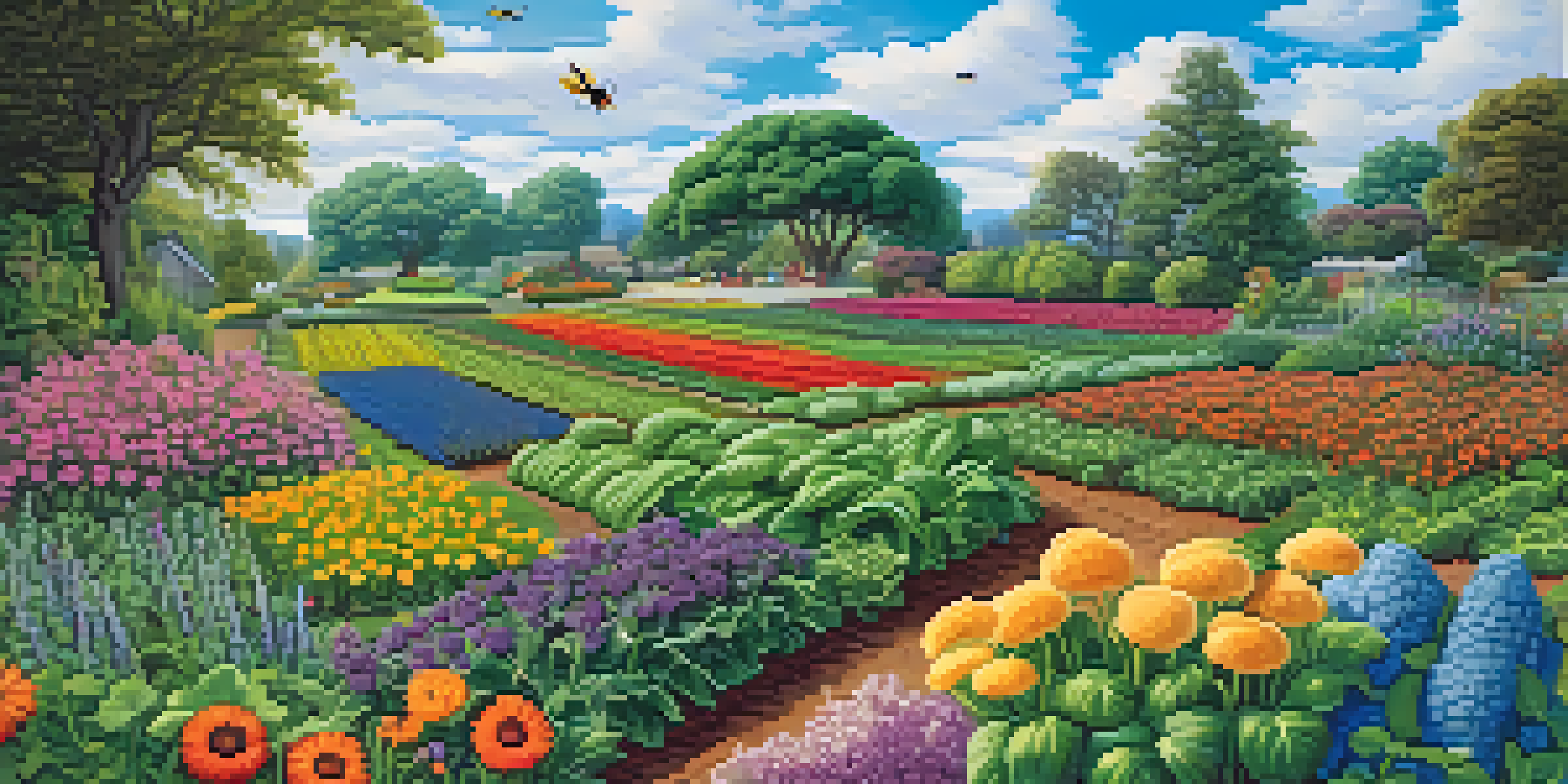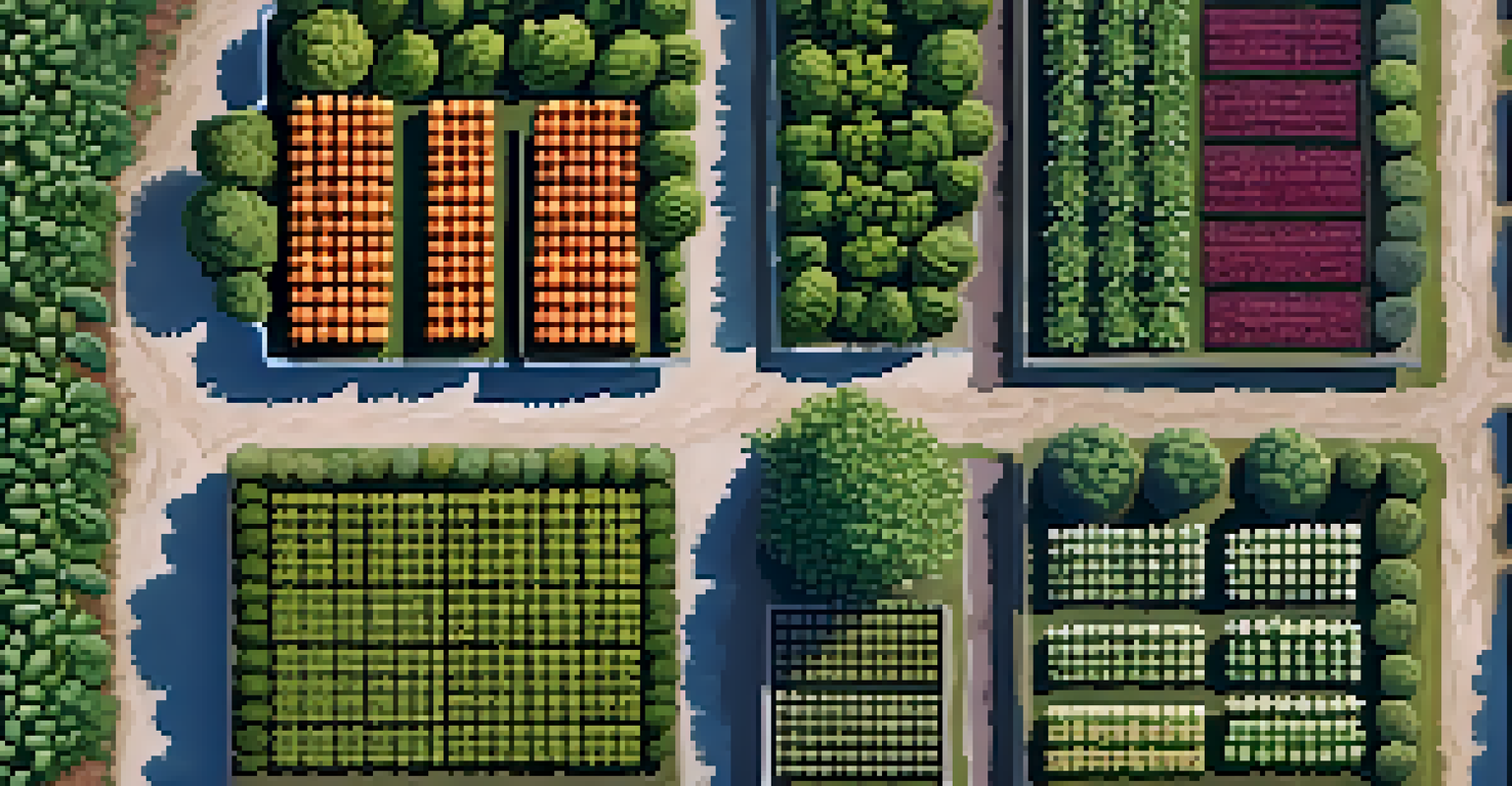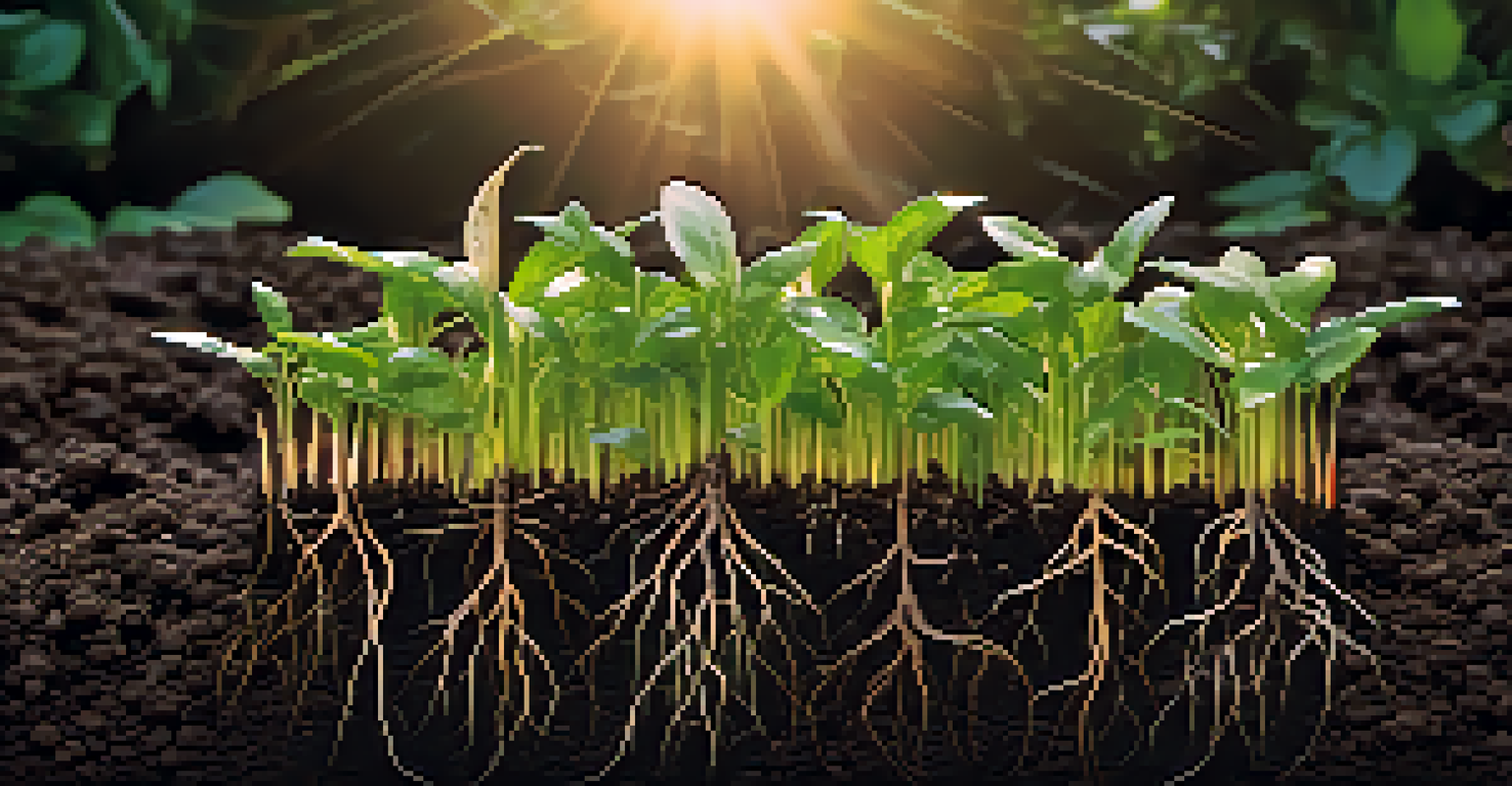The Importance of Crop Rotation in Sustainable Gardening

What is Crop Rotation and Why Does It Matter?
Crop rotation is the practice of alternating the types of crops grown in a specific area over seasons. This technique is vital for maintaining soil health and preventing the depletion of nutrients. By rotating crops, gardeners can enhance biodiversity, which is essential for a thriving ecosystem.
The greatest threat to our planet is the belief that someone else will save it.
When crops are grown in the same location year after year, they can exhaust specific nutrients in the soil. For instance, a heavy feeder like corn will take up a lot of nitrogen, while a legume like beans can replenish it. By rotating these crops, gardeners can optimize nutrient use and reduce the need for synthetic fertilizers.
Moreover, crop rotation helps disrupt the life cycles of pests and diseases. If the same crop is grown continuously, pests that favor that crop can flourish. Changing the crops can confuse pests and reduce their populations, leading to healthier plants.
Enhancing Soil Fertility Through Rotation
One of the primary benefits of crop rotation is its ability to enhance soil fertility naturally. Different plants have varying nutrient requirements and root structures, which can contribute to a well-balanced soil ecosystem. For example, deep-rooted plants can help break up compacted soil, allowing for better water infiltration.

Legumes, such as peas and beans, are particularly beneficial in rotation schemes because they have a symbiotic relationship with nitrogen-fixing bacteria. These bacteria convert atmospheric nitrogen into a form that plants can use, enriching the soil without the need for chemical fertilizers.
Boost Soil Health with Rotation
Crop rotation naturally enhances soil fertility by varying nutrient demands and root structures of different plants.
Additionally, rotating crops can improve the soil’s organic matter content. When cover crops or green manures are included in a rotation, they can be tilled back into the soil, enhancing its structure and moisture retention. This creates a healthier environment for all plants in the garden.
Reducing Pest and Disease Risks Effectively
In sustainable gardening, managing pests and diseases is crucial for healthy crop production. Crop rotation plays a significant role in this by disrupting the habitats of pests and pathogens that thrive on specific plants. For example, if you plant tomatoes in the same spot every year, you may find an increase in pests that specifically target them.
To plant a garden is to believe in tomorrow.
By rotating crops, you can create an environment that is less hospitable to these pests and diseases. When they don't have their favorite food source readily available, their populations can decline. This method is not only effective but also reduces the need for chemical pest control, aligning perfectly with sustainable gardening practices.
Additionally, rotating with crops that are resistant to certain diseases can help break the cycle of infection. This proactive measure can save you time, effort, and resources while promoting a more resilient garden ecosystem.
Promoting Biodiversity in the Garden
Biodiversity is the backbone of a healthy garden ecosystem, and crop rotation is a fantastic way to promote it. By diversifying the types of crops planted, you can attract various beneficial insects and wildlife. This not only helps with pollination but also encourages natural pest control.
For instance, planting a mix of flowers with your vegetables can attract pollinators like bees and butterflies, which are essential for many crops. This diversity creates a more balanced ecosystem that is less susceptible to diseases and pests.
Reduce Pests and Diseases
By alternating crops, gardeners disrupt the life cycles of pests and diseases, leading to healthier plants and reduced chemical use.
Moreover, diverse planting can enhance the resilience of your garden. If one crop suffers from a disease or pest outbreak, other crops may remain unaffected, ensuring that you still have a harvest. This strategy not only secures your food supply but also enriches your gardening experience.
Improving Soil Structure with Diverse Crops
Crop rotation can significantly enhance soil structure, which is vital for plant health. Different crops have varying root systems that affect soil aeration and drainage. For instance, deep-rooted plants can help break up compacted soil layers, allowing for better root penetration and water retention.
Additionally, rotating with cover crops during off-seasons can protect the soil from erosion and nutrient leaching. These crops, such as rye or clover, help bind the soil together, reducing the risk of runoff during heavy rains.
A well-structured soil supports a thriving microbial community, which is essential for nutrient cycling. This means healthier plants and improved yields, making crop rotation a valuable practice for any sustainable gardener.
Integrating Crop Rotation into Your Gardening Routine
Integrating crop rotation into your gardening routine can seem daunting, but it’s easier than it sounds. Start by mapping out your garden space and categorizing crops based on their nutrient needs and growth habits. This will help you plan which crops to plant in successive seasons.
A simple approach is to designate specific sections of your garden for different categories of crops, such as legumes, leafy greens, and root vegetables. This way, you can rotate them systematically, ensuring that each section gets a variety of crops over the years.
Promote Garden Biodiversity
Diverse planting through crop rotation attracts beneficial insects and wildlife, creating a balanced ecosystem that supports overall garden health.
Keep a gardening journal to track what you plant and where, making it easier to plan rotations in the future. Over time, you’ll find that not only does your garden thrive, but you also develop a deeper understanding of your plants and their needs.
The Long-Term Benefits of Crop Rotation
The benefits of crop rotation extend far beyond just one growing season. In the long run, this sustainable practice leads to healthier soil, reduced pest issues, and improved crop yields. By investing time in crop rotation, you’re essentially setting your garden up for success for years to come.
Additionally, crop rotation can lead to better resilience against climate fluctuations. A diverse garden is more adaptable to changes in weather patterns, which is increasingly important in today’s changing climate.

Ultimately, adopting crop rotation not only enhances your gardening experience but also contributes to a more sustainable food system. You’re not just growing food; you’re nurturing the earth and fostering a vibrant ecosystem.